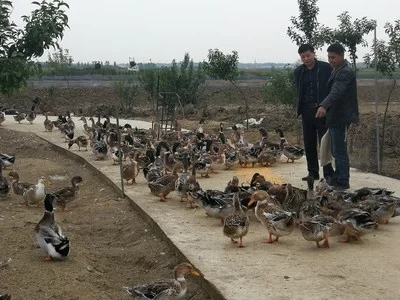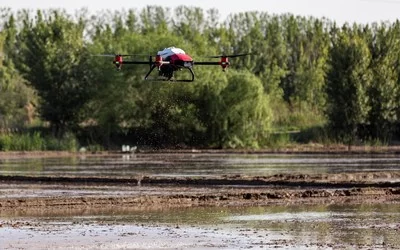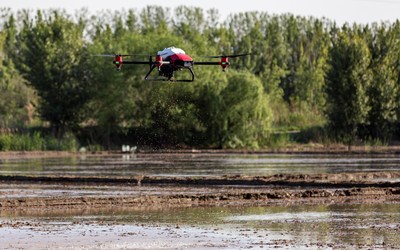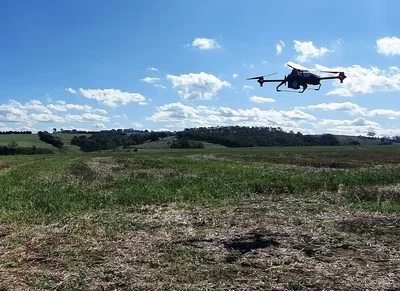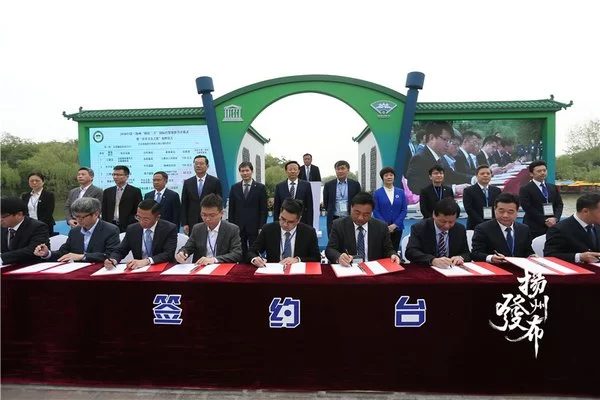GUANGZHOU, China, June 19, 2020 — The ongoing 127th and the first-ever digital China Import and Export Fair (Canton Fair) is supporting more than 1,000 companies from less-developed regions to have access to the international trade market, with exhibitors increasing by 62.3 percent. The ongoing 127th Canton…
Precious Rhodiola plants help China’s Tibetan people out of poverty
BEIJING, June 5, 2020 /PRNewswire/ — A video story presented by China.org.cn on China’s Tibetan people out of poverty by planting precious Rhodiola:
 
In 2015, Bama Chho Dzong, a resident of Tibet’s Shannanluo village, learned that a small, flowering plant-Rhodiola could help impoverished residents of the autonomous region improve their lives.
Rhodiola is a genus of precious perennial plants that are used in traditional Chinese medicine. After China’s Tibet began accepting tourists, demand increased sharply.
In 2015, Shanghai Inoherb Cosmetics Co., Ltd., the Tibet Academy of Agriculture and Animal Husbandry Sciences and the Qizheng Tibetan Medicine Group established Rhodiola cultivation bases, which made it possible for impoverished people like Bama to return to their hometown and begin working there. During the past three years, three Rhodiola cultivation bases were established.
The first Rhodiola cultivation base was established in Luo village and 60,000 Rhodiola seedlings were planted in 2016. Members of 48 households in the area began engaging in irrigation, weed and pest control, and pruning work at the site.
The second Rhodiola cultivation base was established in Suozhu township, Naidong district and 20,000 Rhodiola seedlings were planted in 2018. The staff compared seedlings that grew from seeds with those that were the results of seed culture projects, grew the plants in various soil environments and have continued to explore various cultivation techniques.
In 2019, the third Rhodiola cultivation base was established in the Shigatse Red River Valley National Agricultural Science and Technology Demonstration Zone and a model involving "gardens + enterprises + farmers and herders" was created and implemented.
The plants that the bases grow currently have a survival rate of more than 80 percent. The results that have been achieved have motivated more and more people to participate in the cultivation of plants used in TCM and the management of the bases. Inoherb pays a management fee based on the survival rate that is attained and bonuses are awarded for high rates which helps to stimulate impoverished people’s intrinsic motivation to escape from poverty.
"We have been growing Rhodiola plants for three years. Our hard work has paid off and our cultivation techniques have been improving. Rhodiola cultivation benefits Tibet’s residents, so more and more people are becoming interested in participating in the industry. We also hope that our techniques can be further promoted," said Bama Dorje YudonYuthok, Rhodiola tissue culture expert from Tibet Academy of Agricultural and Animal Husbandry Sciences.
Precious Rhodiola plants help China’s Tibetan people out of poverty
http://p.china.org.cn/2020-06/02/content_76119066.htm
Related Links :
http://china.org.cn
The impact of COVID-19 on smallholders in China
BEIJING, June 5, 2020 /PRNewswire/ — A news report by China.org.cn:
One emerging lesson from the coronavirus epidemic, in China as well as in the rest of the world, is that while everyone may be affected, those who are already vulnerable are those who are likely to be more severely impacted. People who are already vulnerable have in fact less capacity to cope with the impact of such infection: they have limited access to social services, medical or social protection, and have less capacity to cope economically with the consequences of an outbreak.
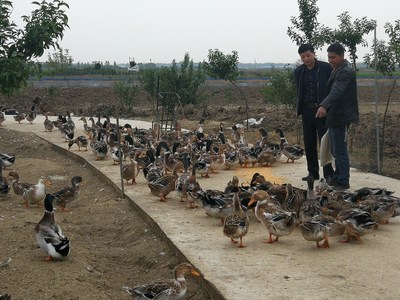
A poverty alleviation official helps an impoverished farmer sell ducks amid COVID-19 pandemic in Qinji village, Anhui province.
I. Why caring about the smallholders
The smallholder farmers are most vulnerable group in China. Smallholder farmers, farmers with less than 2-3 ha of land, represent a significant share of the rural population: approximately 230-250 million people. In most cases, poor rural households are smallholders – and, in most cases, smallholders are poor or ‘close-to-poor’ households.
To appreciate how the new coronavirus epidemic has impacted smallholders, we need to look at their main sources of livelihoods. Smallholders depend on the production and sale of agricultural products – although this source of income represent a decreasing share of their income, probably something between 10-20 percent. Increasingly, they depend on informal or seasonal on- and off-farm employment, and – more and more – on the remittances from family members engaged in urban employment (which contribute to an estimated 44 percent of their income).
II. The impact of movement restrictions on employment, production, and sales
All the three smallholders’ main sources of livelihoods have been severely disrupted by the COVID-19 outbreak. Lockdown and movement restrictions had in fact an impact on employment, particularly for migrant work. Assuming, conservatively, that 75 percent of rural migrants were confined to their villages during the two-month lockdown,a group of researchers from the Rural Education Action Program at Stanford University suggested that possibly 200 million rural individuals have not been working during the lockdown period. If, as reported by Reuters, only 2.3 million people received unemployed benefits so far, the number of workers who have not received a salary for at least two months is extremely high.
Similarly, lockdown and movement (and transportation) restrictions had an impact on the production and sales of agricultural products. Movement and transportation restrictions affected the delivery of agricultural inputs: seeds, fertilizers, animal feed. According to a survey conducted by the Chinese Academy of Agricultural Sciences (CAAS) in five provinces, this had an impact on spring plowing and spring sowing, and a significant impact on livestock production, since livestock production cycles are short. Movement and transport restrictions also had an impact on farmers’ ability to access markets, affecting the sale of fresh products (fruits and vegetables) and livestock in particular, and had an impact on the agricultural supply chains. Almost 70 percent of the cooperatives interviewed by CAAS reported an impact on sales, and 63 percent on the various stages of the supply chain: purchasing materials, processing, transport, and storage.
III. The resulted impact on income, food security and nutrition
Overall, the main impact of the measures implemented to contain the impact of COVID-19 had an impact on income. According to CAAS estimates, farmers are expected a decrease in income between 10-40 percent. 80 percent of the surveyed farmers by CAAS expected more than 20 percent income decrease. Interestingly, the observed impact on the non-poor (but probably close to the poverty line) was higher than on the poor, possibly because the poor had access to some form of social protection that the non-poor were not eligible to. This makes the non-poor but close-to-poverty households further vulnerable, and at risk of falling into poverty.
The immediate impact of the reduction in income was a reduction in expenditures. According to a survey conducted by the Rural Education Action Program in seven provinces, the experienced reduction in income led to a reduction in expenditures for food consumption. Particularly, it was observed a reduction in the "quality" of the purchased food:frommore nutritious but more expensive food, to low-cost staple food. The immediate implication is that, despite food availability and food prices have overall remained stable during the period of the crisis (although many households reported an increase in food prices), reduced purchasing capacity because of falling income may lead to periods of food insecurity and malnutrition among vulnerable rural households.
The impact of the reduction of income on savings and assets has not yet been analysed – but it isplausible to hypothesize that poor households might have sold their assets and eroded their savings to cope with the crisis, making them more vulnerable.
IV. Key messages
First, while the effect of the measures implemented to contain the Covid-19 hit everyone (the whole economy has contracted by 6.8 percent in the first quarter, according to the National Bureau of Statistics), the impact on smallholders (and particularly on those that are either poor or above but close to the poverty line) seems higher because they are already vulnerable.
Second, with a gradual pick-up of the economy and a gradual "return to normality," the short-term impact of COVID-19 may be contained and absorbed. In fact, what may likely happen is that fewer people may escape poverty than would have in the absence of the outbreak.
However, the longer-term impact may be greater: a large share of the population may have become more vulnerable and at risk of falling (or falling back) into poverty in the event of a new shock – be it a new outbreak, an unexpected drop in commodity prices, or a poor harvest due to unfavorable weather events.
This is no surprise. The Government is aware that one of the main challenges in the years after 2020 will be to reduce vulnerabilities and avoid that people fall (or fall back) into poverty.
IFAD will continue to support China’s strategic focus on rural areas and rural people as an integral part of its rural revitalization strategy. Fostering rural communities that are increasingly resilient to shocks will be one of the main areas of cooperation.
Matteo Marchisio is the Country Director and IFAD Representative (China, Republic of Korea, and DPRK) and Head of East Asia Regional Hub and South-South Cooperation Center.
Opinion articles reflect the views of their authors, not necessarily those of China.org.cn and Chinagate.cn.
The impact of COVID-19 on smallholders in China
http://p.china.org.cn/2020-06/01/content_76114092.htm
Automated Farming: XAG Introduces Rice Seeding Drone to Mitigate Labour Shortage
GUANGZHOU, China, May 27, 2020 /PRNewswire/ — With the farming population decreasing and growing older, the global food system now faces great uncertainty especially when the covid-19 pandemic exacerbates labour shortages. Its potential havoc can somehow be avoided by the integration of automation technologies. To overhaul the labour-intensive rice farming industry, XAG is scaling up drone applications in China that enable night-time seeding at peak period.
Drones Sowing Seeds for Aging Farmers
On 13 April 2020, XAG organised the world’s first-ever rice direct seeding demonstration on the comparison between manual broadcasting and drone seeding. The operation was conducted in China’s ‘Happy Farms’, one of the largest modern agricultural parks as well as smart agriculture demonstration site in Guangdong province. Two workers were invited to spread 5kg of rice seeds, walking slowly through the waterlogged paddy field with their feet swamped in the mud. This was a laborious and lengthy process, which took them 25 minutes to cover 1,200 square metres of land.
Then XAG’s drone followed a pre-programmed route and dispensed rice seeds from the air. With JetSeed granule spreading system, it finished the same amount of work in only two minutes. One XAG agricultural drone can seed 50,000 square metres of land per hour, which would otherwise take 50 to 60 field workers to complete. Happy Farms has just introduced XAG’s autonomous drones to replace manual labour for seeding, fertilisation, and crop spraying.
Many other farms in China, however, are still haunted by the problem of labour dependence, which has increased their vulnerability to the aging farming population. According to National Bureau of Statistics, China’s rural population has substantially reduced by 23% in the past two decades, while those aged over 55 constitute one third of the agricultural workforce. When the older generation of farmers retire and young people pour into the cities for better employment, the future of food supply seems unsecure if counting on manpower.
Direct Seeded Rice Planted at Night
Direct seeded rice (DSR) refers to the process of sowing seeds directly into the fields without nursery cultivation and transplantation. As a more sustainable alternative to conventional transplanting, it avoids deteriorating soil health and intensive water use. However, DSR can only be conducted either by hand or use of large ground machinery in the past.
Unlike the large-scale agriculture economies, most Asian countries with rice as their staple crop cannot resort to large automated machinery such as driverless tractors, because of the complex terrains, small size of many farms and high costs. This is where the nimble, agile drones can unleash their full potential to empower the rice farmers toiling on the land. For example, XAG’s agricultural drone can not only be utilised to spray crops to ward off pests and diseases, but it can also distribute rice seeds directly into the paddy fields without seedling transplant.
JetSeed is an intelligent granule spreading system mounted on the bottom of XAG agricultural UAS, to endow the drone with new function of direct rice seeding. After simple parameter set-up on app, it generates high-speed airflow to project proper amount of seeds accurately into the targeted topsoil. Such mechanism is designed to maintain optimum spacing and uniform plant density. Compared with manual broadcasting and traditional sowing machine, drone seeding proves to achieve higher seedling rate and lodging resistance as important factors of a bumper harvest.
Chinese farmers also start embracing night-time drone seeding to resolve severe labour shortfall during the busy planting season. Li Qisheng, a drone operator in Anhui, China, has turned on night operation mode this May to meet the increasing demands for autonomous direct seeding. "There are two major advantages of seeding at night by drones. First, aerial spreading is more precise and even after sunset when it is usually less windy than during daytime. Second, by extending the operational period, it helps farmers avoid missing the planting season." XAG agricultural UAS is the only drone in the industry which can operate safely days and nights.
Stabilise Food Security under COVID-19 Pandemic
XAG has made a great leap forward by taking drone seeding technology from experimental stage to commercial adoption across China’s main rice planting areas. Since April 2019, XAG’s drone direct seeding solutions have been applied to over 650 million square metres of rice fields in China’s 11 provinces. It is helping both smallholders and large farm owners to resolve common challenges such as operational inefficiency, aging crisis, and shortage of field workers.
When COVID-19 loomed over the spring planting season, XAG has mobilised farmers to adopt seeding drones as prompt response to rural workforce shortages. Despite the economic disruption, China’s agriculture has witnessed a robust performance with 3.5% year-on-year increase in the added value of the planting industry, according to the Ministry of Agriculture and Rural Affairs. To feed 1.4 billion people with enough staple food, China this year plans to cultivate 4.6 million hectares of early rice, raising by 0.2 million hectares from last year.
However, although the global food system remains well functioning at this moment, the lack of agricultural workforce might undermine future production and supply of food, warned by the UN Food and Agriculture Organisation (FAO). Many countries are now struggling to mitigate their labour-deficit in seasonal migrant workers, for example, 80,000 farming jobs needs to be filled while that number in Germany reaches to 300,000. With such urgent labour challenges, the shift to automation, powered by smart agtech such as drone, becomes more imperative in the coronavirus age.
Related Links :
http://www.xa.com
Kezzler Delivers Farm-to-fork Authenticate and Traceability System to Chinese National Agricultural Park
Kezzler enables RunHui Agriculture to secure its supply chain and protect well-known Chinese food products from counterfeits OSLO, Norway, May 14, 2020 /PRNewswire/ — Kezzler was selected by RunHui Agricultural Comprehensive Development Co. Ltd (referred to as RunHui) to provide…
XAG Deploys Drones to Seed Burned Land for Australian Fire Recovery
XAG joined hands with DELWP and HDLN on the first-ever post-fire drone seeding operation on Cobrico Peat Swamps, Victoria in Australia. Drones with intelligent spreading system were used to distribute seeds directly into the fire-ravaged, difficult-to-access areas. The trial project…
Origin Agritech Further Strengthens its Board of Directors
BEIJING, April 30, 2020 /PRNewswire/ — Origin Agritech Ltd. (NASDAQ: SEED) (the “Company” or “Origin”), an agriculture technology and rural e-commerce company, today announced that Dr, Min Lin will join the Company’s Board of Directors as independent board members. Dr. Min Lin…
Xinhua Silk Road: International economic, trade, tourism festival spurs dev. of E China’s Yangzhou
BEIJING, April 21, 2020 /PRNewswire/ — The 2020 China Yangzhou Flowery March International Economic, Trade and Tourism Festival kicked off on April 18 in Yangzhou of east China’s Jiangsu Province with 36 key projects contracted at the opening ceremony. It…





